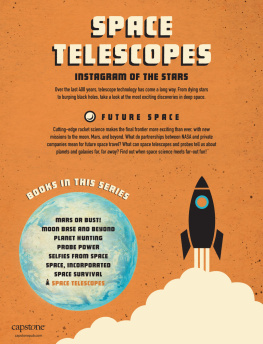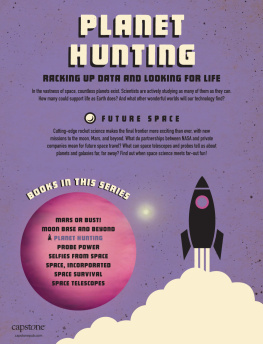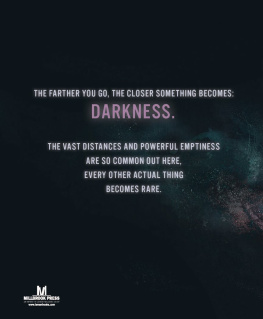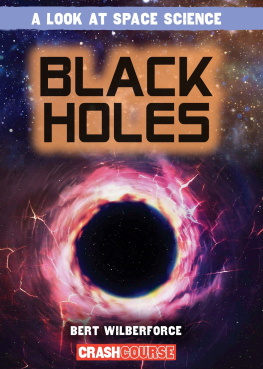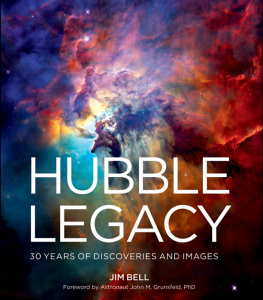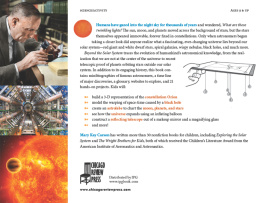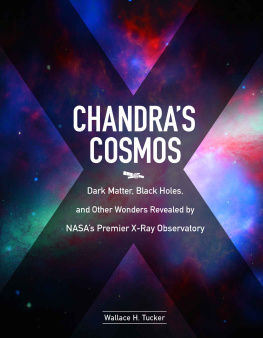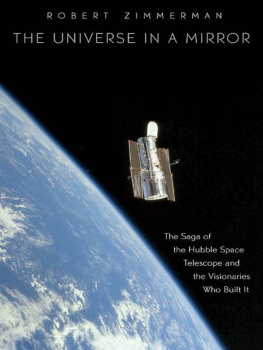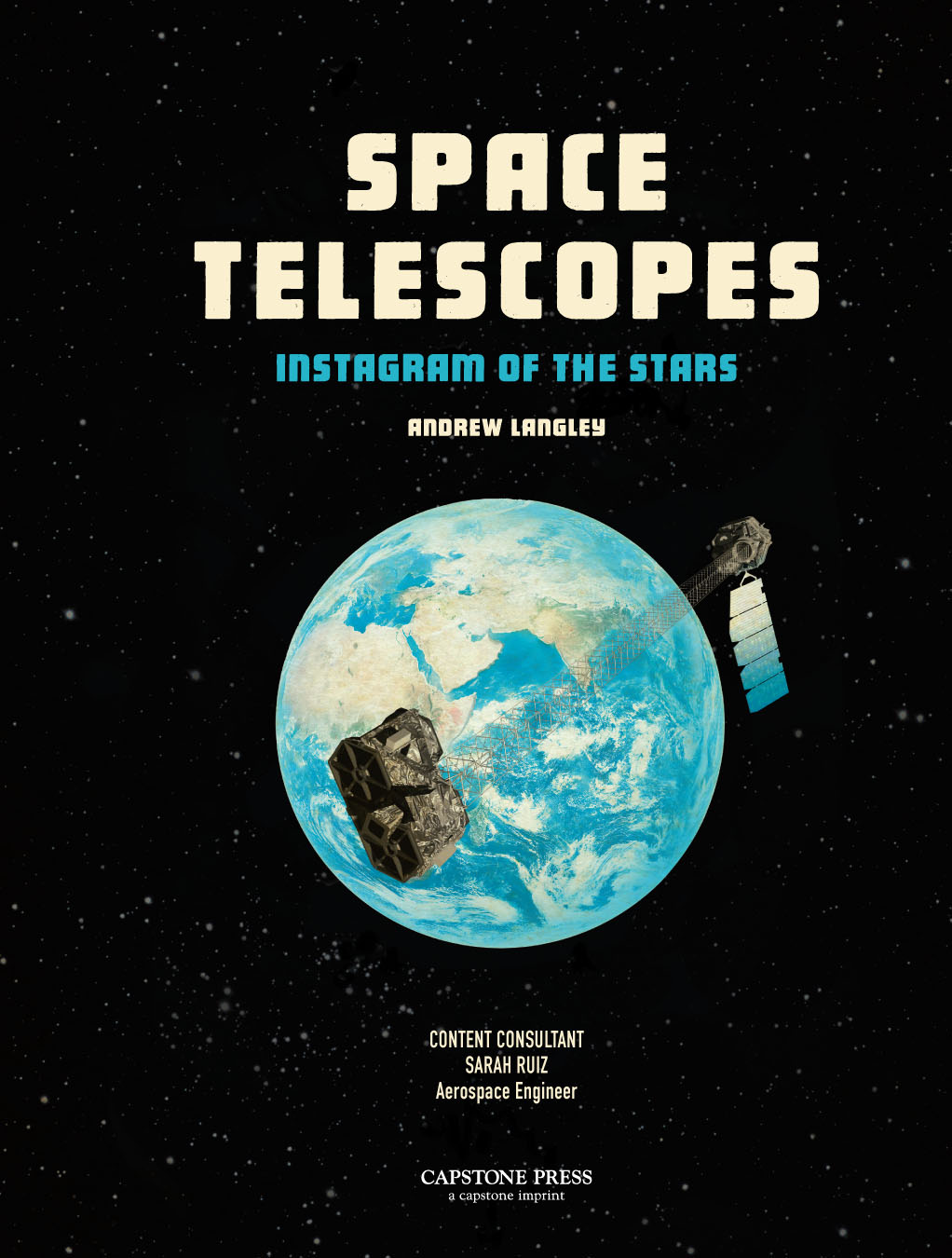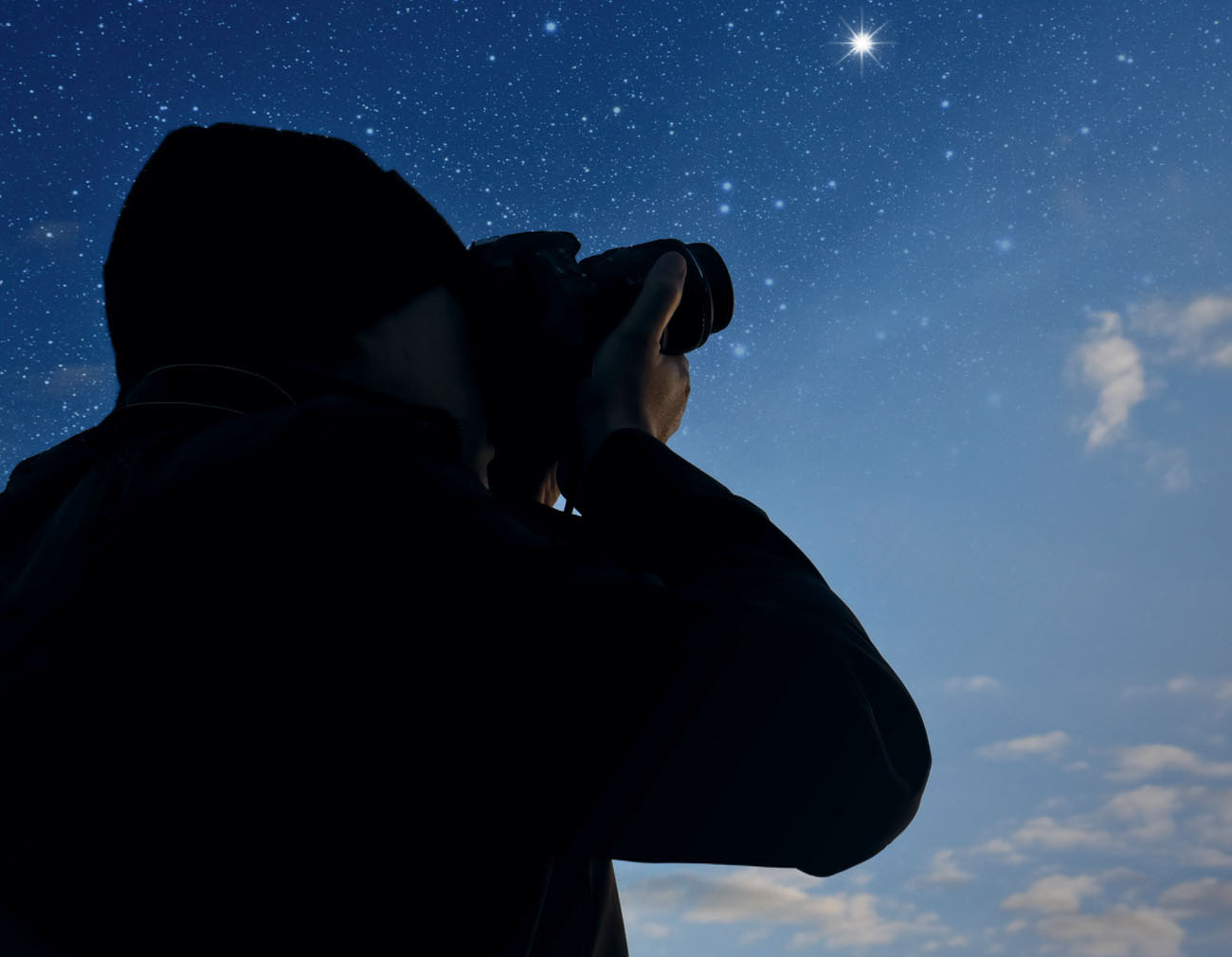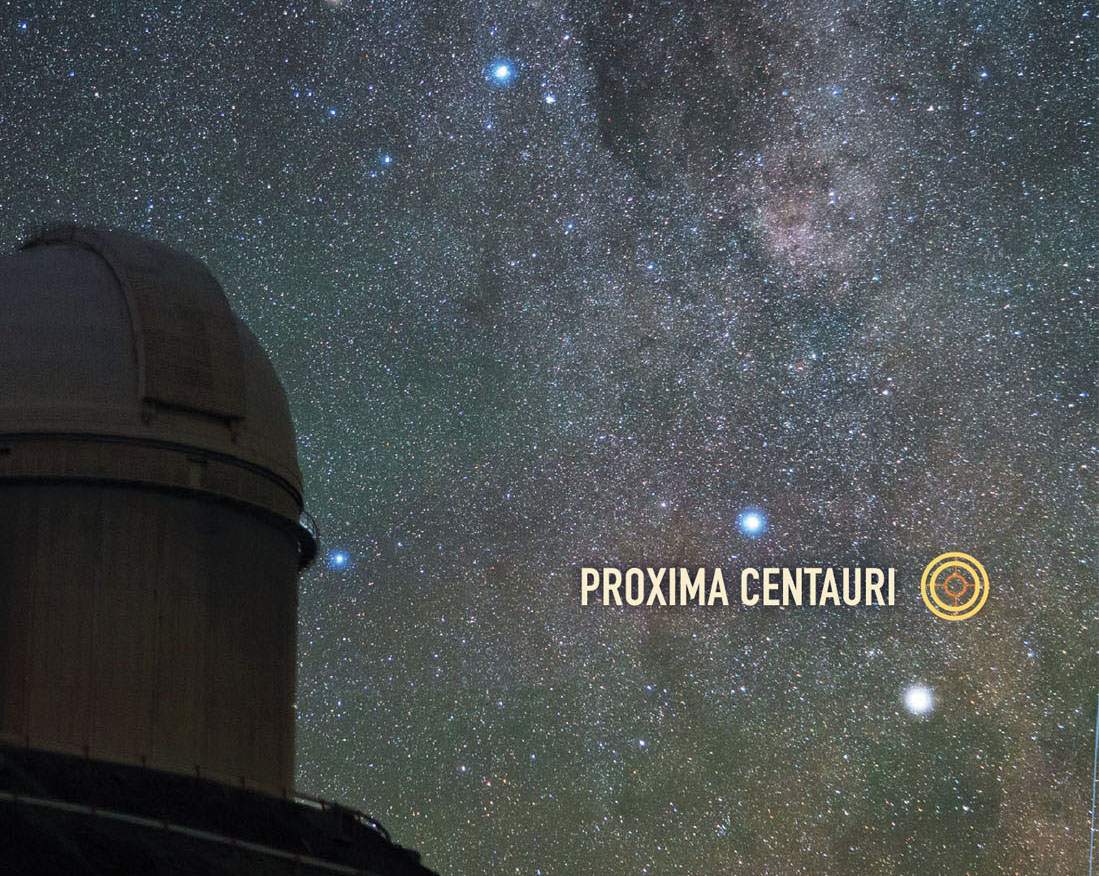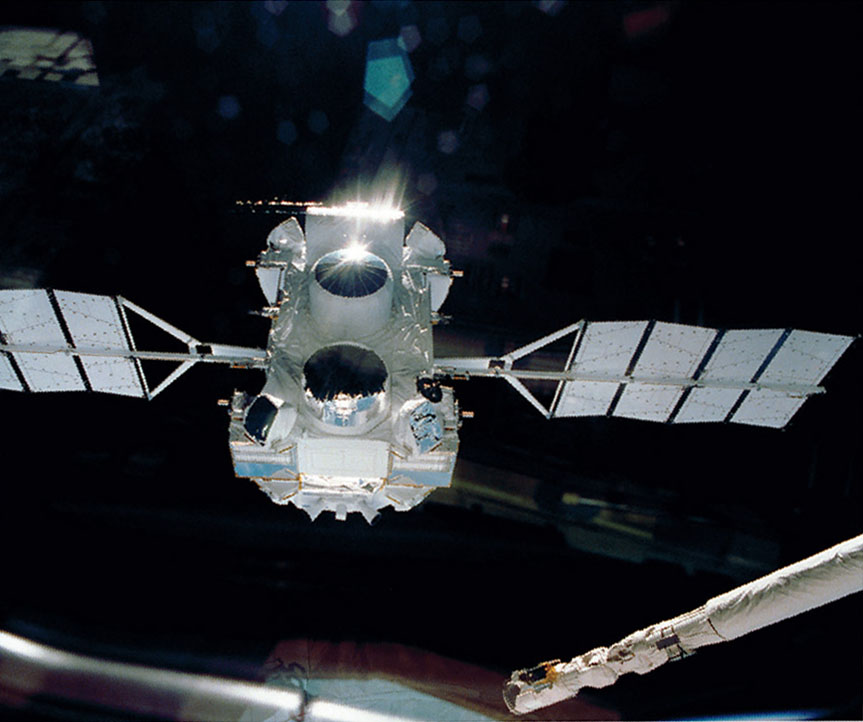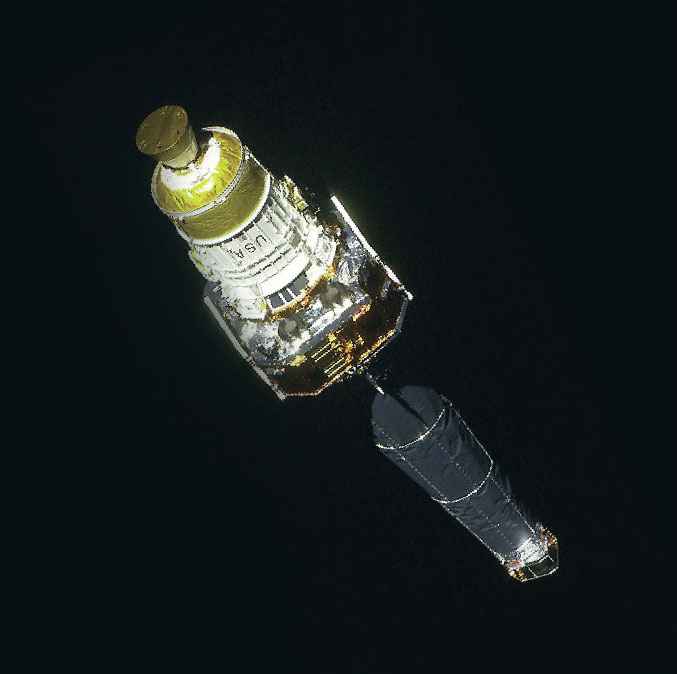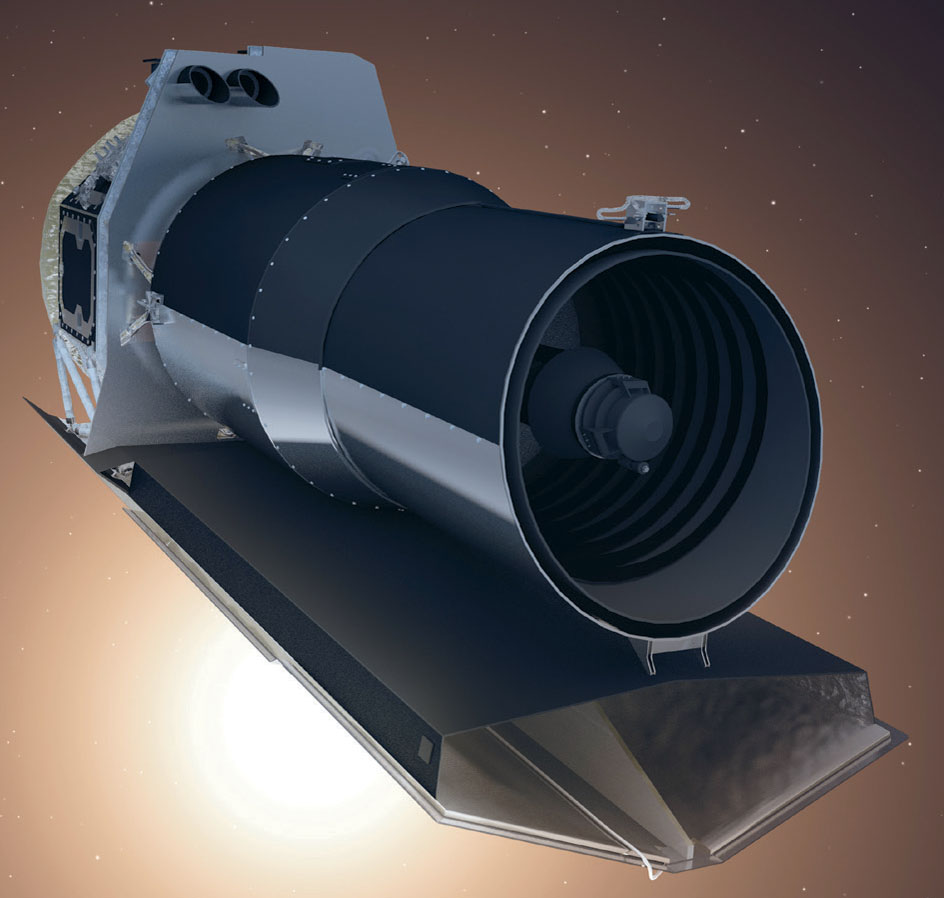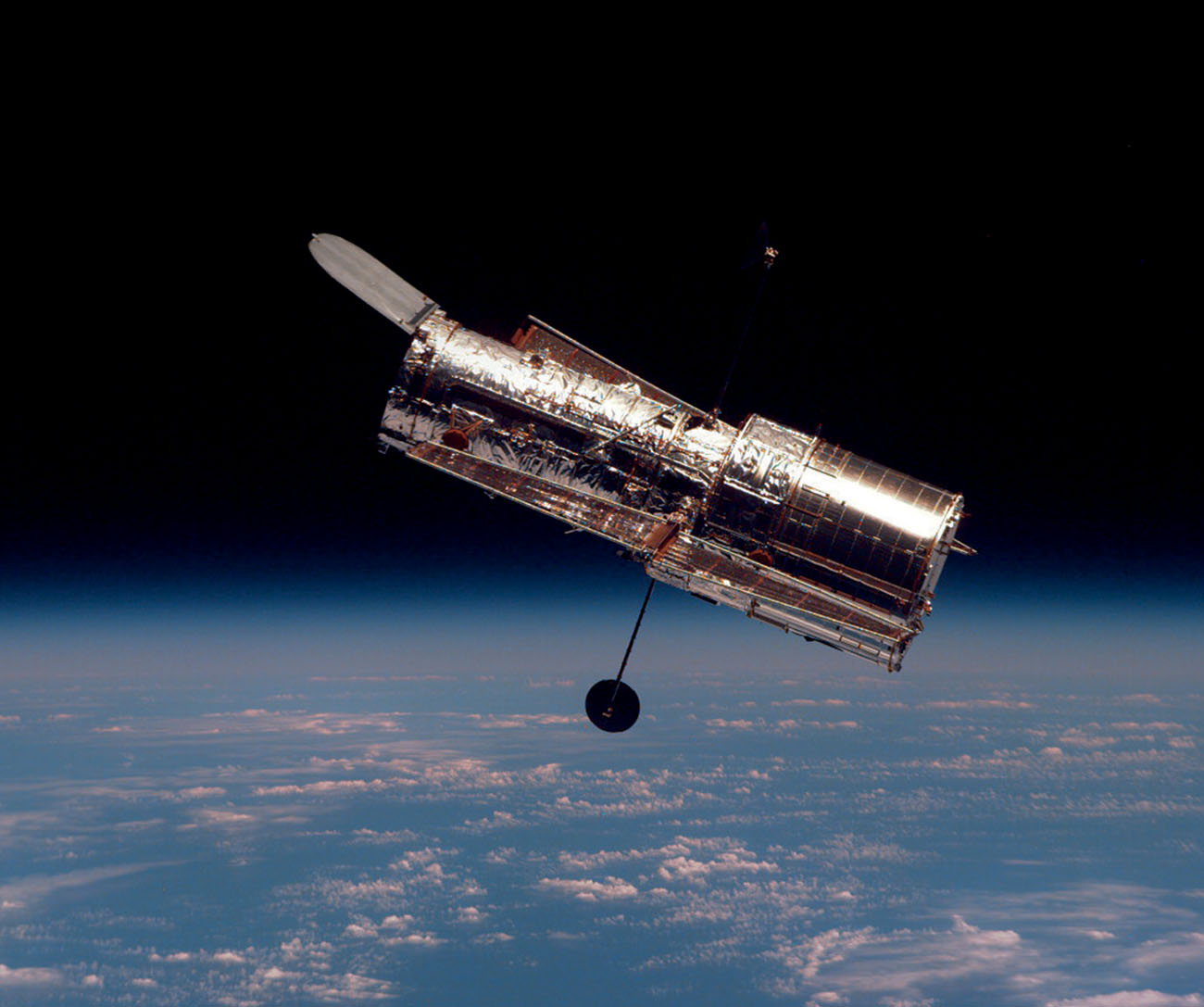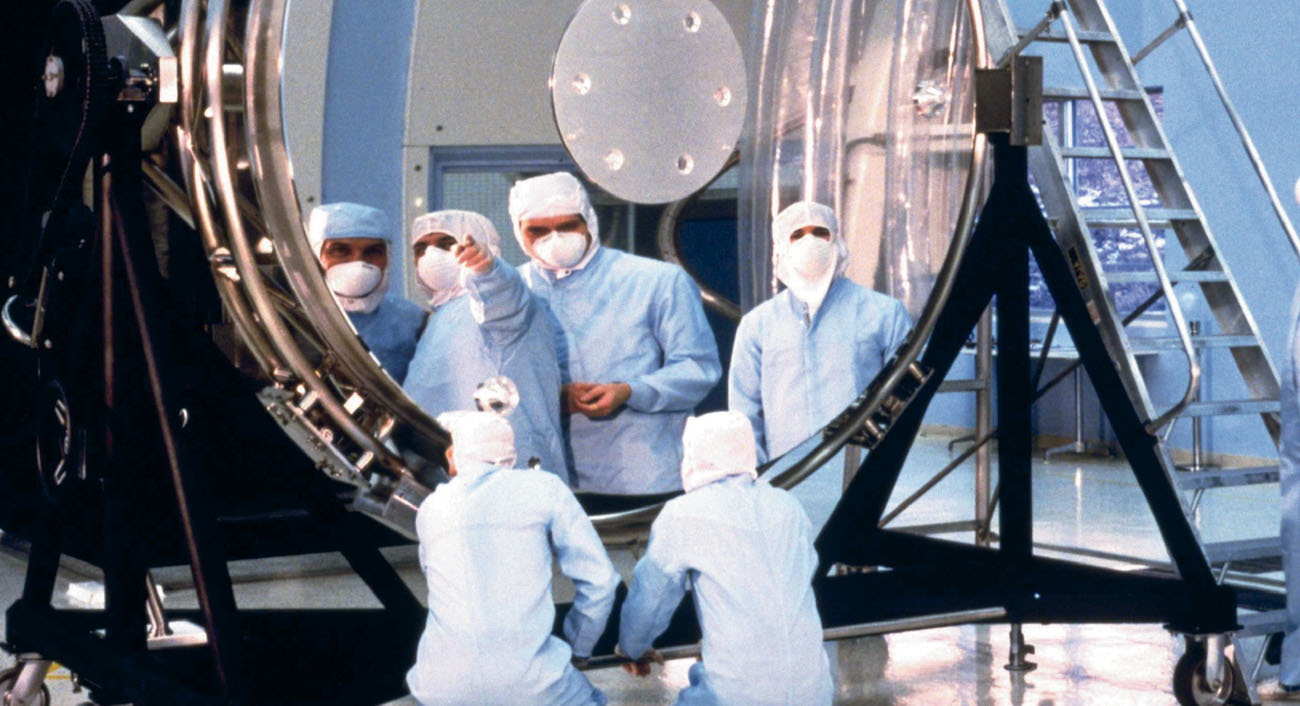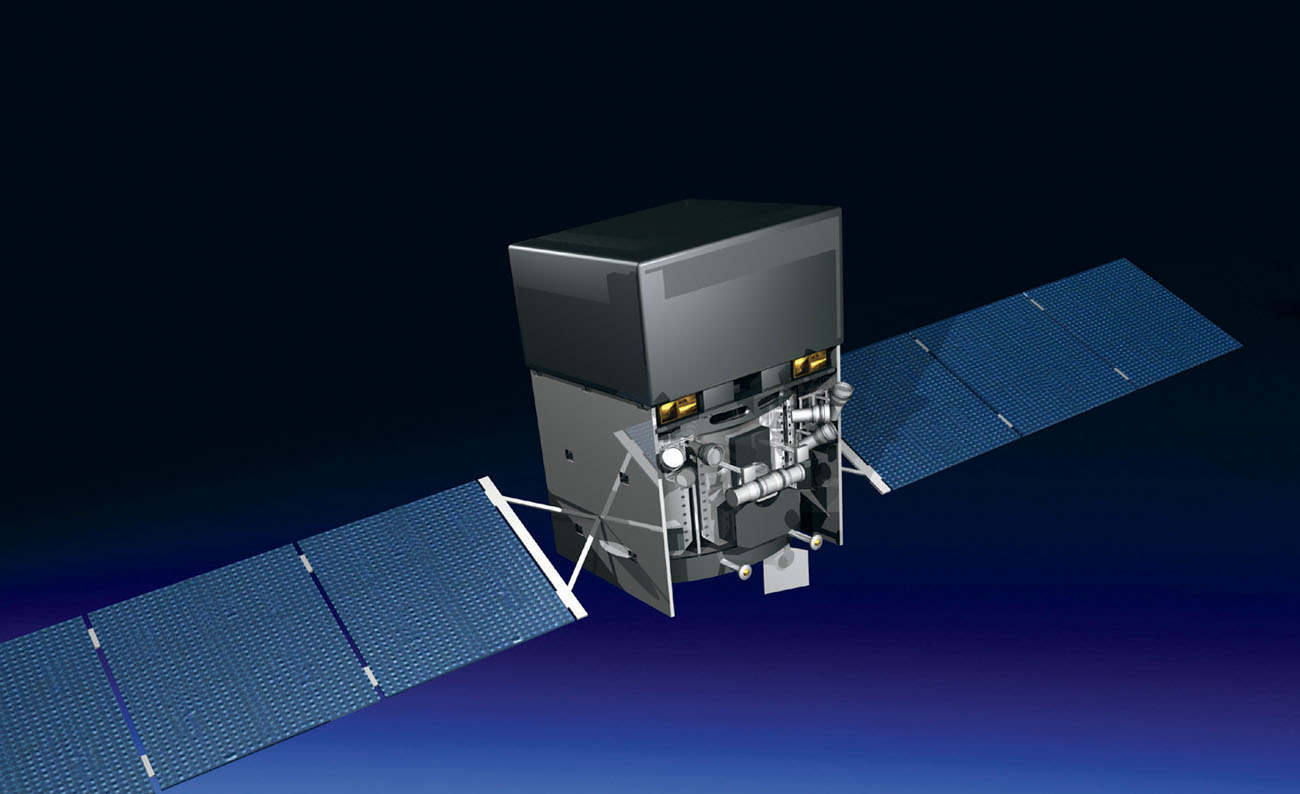Even a star runs out of fuel. When this happens, the center of the star collapses in a gigantic explosion. Then the star is called a supernova.
The around Earth, taking pictures of stars and other objects that pass by. The Hubbles mission will continue through 2025.
SPACE FACT:
The Hubble is the only telescope that can be repaired in space. Astronauts have made five trips from Earth to fix problems and attach new parts.
The Hubble has sent back a mind-boggling mountain of images and information. Scientists receive 140 gigabits of data each week! This information has changed the way scientists look at the universe. The Hubble images have illustrated how galaxies of stars grow and change over billions of years. The Hubble has taken pictures of dying stars. Scientists also discovered four icy moons that orbit the Pluto.
The Hubble Space Telescope is about as long as a school bus.
How does the Hubble Space Telescope capture amazing photos? By collecting light. Space telescopes have mirrors. In the Hubble, a stars light strikes the telescopes large main mirror. The light bounces off and hits a second, smaller mirror. The smaller mirror gathers the light into a tiny beam. The beam travels inside the telescope. There, scientific equipment analyzes the light and collects data. To retrieve this data, scientists use NASAs Space Network. This network uses satellites that work as a relay system to send and receive information from the Hubble in space.
The Hubbles main mirror is 8 feet (2.4 meters) wide.
The Hubble Space Telescope is powered by the sun. Huge panels on the sides collect . But what happens when the suns light is blocked out? The telescope uses the solar energy stored in batteries. This way it never runs out of power.
| HUBBLE FACTS AND FIGURES |
|---|
| LENGTH | 43.5 FEET (13.3 M) LONG |
| WEIGHT | 13.5 TONS |
| MILES FLOWN | MORE THAN 4 BILLION MILES (6 BILLION KM) |
| SPEED | TRAVELS 17,000 MILES (27,300 KM) PER HOUR |
| ORBIT TIME | TAKES 95 MINUTES TO COMPLETE ONE ORBIT |
| NUMBER OF OBSERVATIONS | HAS MADE 1.3 MILLION OBSERVATIONS OF DISTANT SPACE SO FAR |
CHAPTER THREE
TELESCOPES NEAR AND FAR
Scientists arent just focused on the Hubble Space Telescope. There are many other telescopes zipping through space.
NASAs Fermi Gamma-ray Space Telescope was launched in 2008. Scientists wanted to know why supermassive black holes make gamma rays. They also hoped to discover the effects gamma rays have on nearby space objects. To do this, the Fermi telescope has two special features. One is a telescope that can pinpoint thousands of sources for gamma rays. The other is a machine that records gamma ray bursts.
From 2009 to 2013, the Herschel Space Observatory was used to study the colder parts of the universe. It carried the biggest infrared telescope ever launched into space. The telescope recorded new stars being formed and clustering into new galaxies.
Fermi Gamma-ray Space Telescope
SPACE FACT:
A black hole is a place where the pull of gravity is so strong that nothing can get outeven light. Supermassive black holes have been swallowing gas and other matter for billions of years.
The Nuclear Spectroscopic Telescope Array, or NuSTAR, is not your typical space telescope. For starters, it was launched from an airplane. In 2012 a high-flying Lockheed Tristar airplane dropped a rocket carrying the NuSTAR. The rocket fired in mid-air and took the telescope up into space.
Using X-ray cameras, NuSTAR captured pictures of glowing fragments from exploded stars. The images were clearer than ever before.

